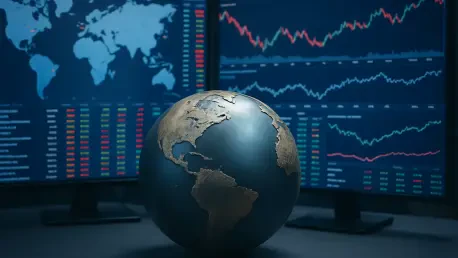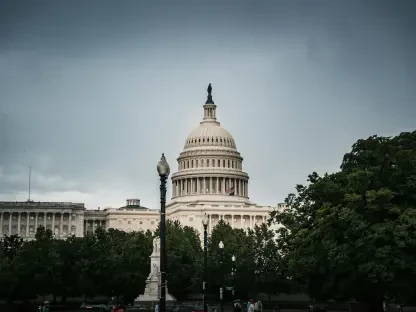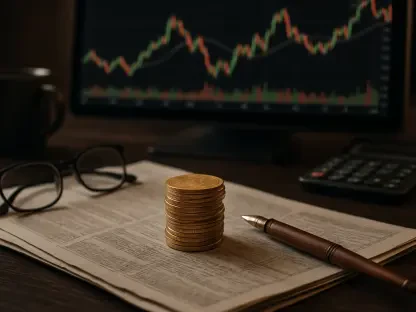As geopolitical tensions in the Middle East show signs of easing with a potential Trump-backed peace agreement to end the long-standing Gaza conflict, global financial markets are buzzing with cautious optimism about the transformative economic impacts that could follow. The prospect of lasting stability in a region often marred by uncertainty has sparked renewed interest among investors, with many anticipating a significant rally in both regional and international equities. This development, if realized, could mark a turning point for sectors ranging from energy to infrastructure, while also reshaping investor sentiment on a broader scale. The implications of such a deal extend far beyond the immediate region, promising to influence global economic trends and investment flows in ways that could redefine market dynamics for years to come.
Regional Impacts and Opportunities
Gulf Equities Poised for Growth
The Middle East, particularly Gulf nations like the UAE, Saudi Arabia, and Qatar, stands at the forefront of potential market gains should a credible peace deal materialize. Early indicators of investor confidence are already visible, with markets in Dubai and Abu Dhabi recording gains of around 1%, while Saudi Arabia’s Tadawul index surged by over 1.5% in a single trading session recently. These movements reflect a swift response to diminishing geopolitical risks, as the region’s fiscal strength and substantial sovereign wealth reserves position it to capitalize on stability. Analysts suggest that a sustained ceasefire could unlock significant capital inflows, driving stock valuations higher and fostering a climate of economic optimism. Beyond mere numbers, this shift could encourage long-term investments in key industries, setting the stage for a robust recovery and growth trajectory across the Gulf.
Moreover, the potential for regional equities to rally is closely tied to the broader narrative of economic diversification in these countries. Nations like Saudi Arabia and the UAE have been pivoting away from oil dependency, investing heavily in technology, tourism, and renewable energy. A peace agreement would likely accelerate these efforts by creating a safer and more attractive environment for foreign direct investment. This could lead to a virtuous cycle of growth, where increased market confidence fuels further economic reforms and infrastructure projects. The ripple effects might extend to smaller regional players as well, amplifying the overall impact on Middle Eastern financial landscapes and offering a rare window of opportunity for investors seeking high-growth markets.
Sectoral Shifts in Energy and Infrastructure
A lasting ceasefire in the region could have profound effects on specific sectors, with energy stocks expected to stabilize as the geopolitical risk premium embedded in oil prices begins to narrow. This stabilization would benefit not only traditional oil producers but also refiners, pipeline operators, and renewable energy firms aligned with Gulf diversification strategies. The reduced uncertainty could make energy investments more predictable, encouraging capital allocation to projects that have been on hold due to regional volatility. As a result, the sector might witness a renewed wave of innovation and development, particularly in sustainable energy solutions that align with global environmental goals.
Equally significant is the projected boom in infrastructure and construction, as a credible peace framework could trigger an unprecedented wave of reconstruction projects across conflict-affected areas. Such initiatives would demand vast amounts of capital, materials, and engineering expertise, potentially creating one of the largest investment opportunities since the early 2000s. Financial services, too, are likely to see substantial growth as project financing needs soar, while sectors like transport and logistics could benefit from restored regional confidence. This multi-sectoral uplift underscores the interconnected nature of economic recovery, where stability in one area catalyzes progress in others, painting a picture of comprehensive regional revitalization.
Global Market Reactions and Challenges
Investor Sentiment and Risk-On Rally
On a global scale, the prospect of Middle East peace is already influencing investor sentiment, with many anticipating a “risk-on” rally that could reshape investment flows worldwide. Over the past few years, markets have priced in a significant war risk premium, sidelining substantial capital in safe-haven assets. A successful peace agreement could reverse this trend, prompting institutional investors to shift toward equities and higher-yield opportunities in both emerging and developed markets. This momentum might be further amplified by expectations of US interest rate cuts, creating a favorable environment for risk-taking and potentially driving gains in Asian and European markets tied to energy, logistics, and construction.
The broader implications of this shift are noteworthy, as emerging-market bonds and equities could see renewed interest from global investors seeking growth. The interconnectedness of modern financial systems means that stability in one critical region like the Middle East can bolster confidence across continents, encouraging a more aggressive investment stance. However, this optimism must be tempered by the recognition that such a rally depends on the peace deal’s credibility. Without clear evidence of progress, the initial enthusiasm could wane, highlighting the delicate balance between hope and pragmatic market assessments in shaping global economic narratives.
Navigating Potential Obstacles
Despite the optimistic outlook, several challenges remain that could temper the anticipated market surge. Analysts emphasize that the sustainability of any uptrend hinges on tangible progress, such as enforceable ceasefire agreements and structured financing for reconstruction efforts. Without these critical components, the initial market gains risk being short-lived, as investors may quickly retreat to safer assets if instability resurfaces. Diplomatic consistency will also play a pivotal role, as ongoing commitment from all parties involved is essential to maintaining the fragile momentum of peace initiatives.
Furthermore, the complexity of rebuilding war-torn areas cannot be understated, as it requires not only financial resources but also coordinated international support and local governance reforms. Markets will be closely monitoring these developments, with any delays or setbacks potentially undermining confidence. The path forward demands a careful balance of optimism and caution, as the global investment community weighs the transformative potential of peace against the practical hurdles of implementation. Only through sustained effort and collaboration can the envisioned economic benefits be fully realized.
Reflecting on a Historic Opportunity
Looking back, the discussions around a potential Middle East peace deal stirred remarkable optimism across global markets, with early gains in Gulf equities and sectoral projections painting a hopeful picture. The anticipation of stability had ignited a wave of confidence, particularly in energy, infrastructure, and financial services, while the promise of a risk-on rally captivated investors worldwide. Yet, the challenges of ensuring enforceable agreements and structured rebuilding efforts remained ever-present. As this historic opportunity unfolded, the focus shifted to actionable steps—securing diplomatic commitments, mobilizing international funding, and fostering regional cooperation. These measures became the cornerstone for translating hope into lasting economic progress, offering a blueprint for how geopolitical resolutions could redefine market landscapes for future generations.









